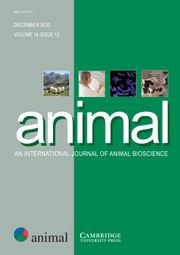Review: Use and misuse of meta-analysis in Animal Science
Animal (2020), 14:S2, pp s207–s222

Abstract
In animal sciences, the number of published meta-analyses is increasing at a rate of 15% per year. This current review focuses on
the good practices and the potential pitfalls in the conduct of meta-analyses in animal sciences, nutrition in particular. Once the
study objectives have been defined, several key phases must be considered when doing a meta-analysis. First, as a principle of
traceability, criteria used to select or discard publications should be clearly stated in a way that one could reproduce the final
selection of data. Then, the coding phase, aiming to isolate specific experimental factors for an accurate graphical and statistical
interpretation of the database, is discussed. Following this step, the study of the levels of independence of factors and of the
degree of data balance of the meta-design represents an essential phase to ensure the validity of statistical processing. The
consideration of the study effect as fixed or random must next be considered. It appears based on several examples that this
choice does not generally have any influence on the conclusions of a meta-analysis when the number of experiments is sufficient.